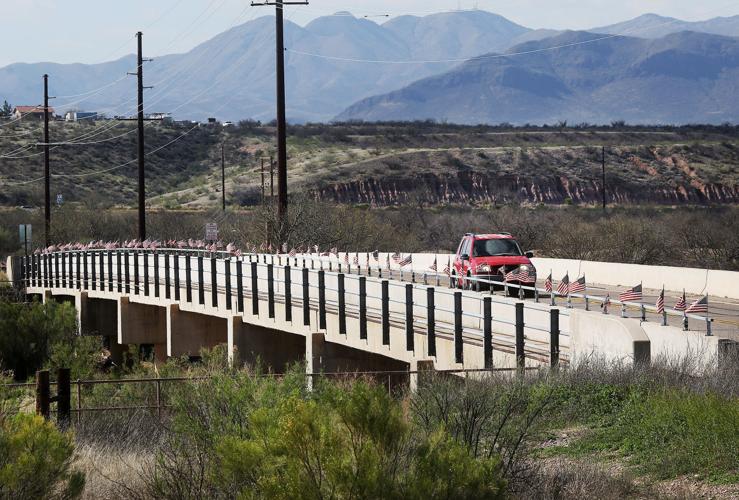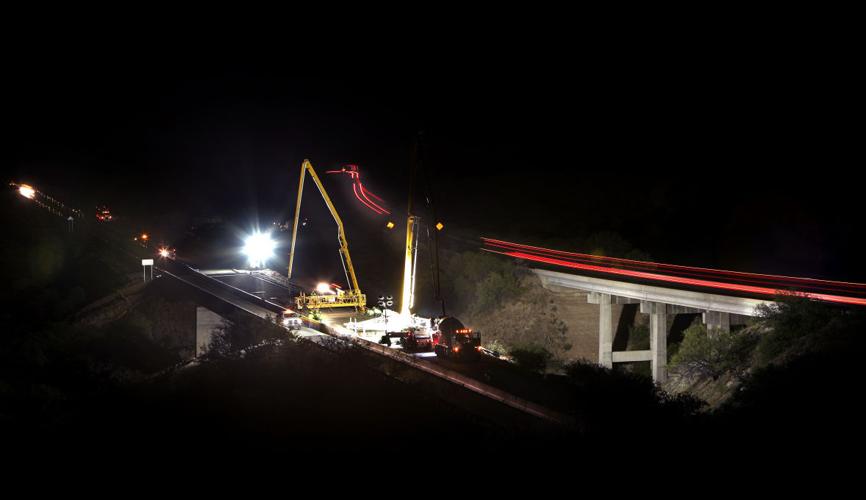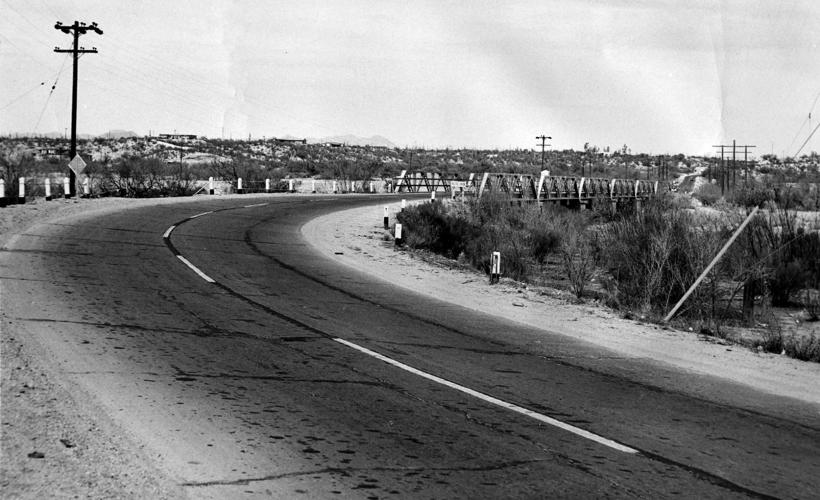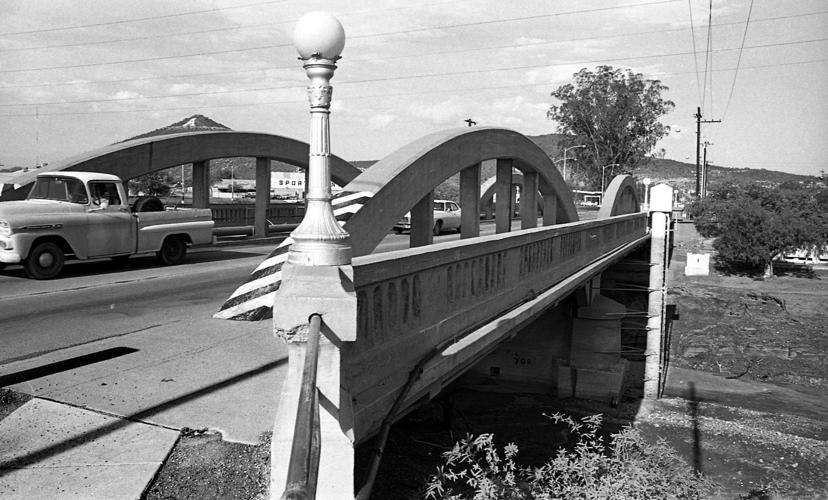The 22nd Street bridge over Barraza-Aviation Parkway is safe, the city says, but too narrow for modern traffic and large trucks with very heavy loads.
Design for a replacement bridge is nearly finished and the city hopes to begin work next year, using $50 million, primarily from the voter-approved Regional Transportation Authority.
In the meantime, the city Department of Transportation continues to restrict weight on the 51-year-old bridge, which is used by nearly 40,000 vehicles every day. Over the years it has lowered the limit — now at 30,000 pounds per vehicle.
That tactic is increasingly being used by the city and Pima County to delay the day when bridges must be replaced.
The 22nd Street bridge has a federal “sufficiency rating” of 66. Some of the 1,200 bridges in Pima County have nearly single-digit ratings, according to data from the Federal Highway Administration. It scores bridges from 1 to 100, which is best.
But don’t let the ratings fool you. The Tex Wash bridge near Desert Center, California, which collapsed last year during a rainstorm, had a 91.5 rating. Officials now believe the 48-year-old bridge had a design flaw.
The ratings are complex, with a bridge losing points for a number of reasons including a low vertical clearance and narrow lanes.
These ratings are not, officials agree, a yardstick on whether a bridge is in imminent danger of collapse and all of the bridges in Pima County are completely safe, according to transportation experts at both the city and county. The decision to lower weight limits is aimed at easing strain on bridges so they last longer.
On the 22nd Street bridge, if the city were to lower the weight limit any further it would no longer be accessible to garbage or fire trucks or buses.
Pima County has been rerouting heavy traffic along Houghton Road near Interstate 10 to Rita Road for years, rather than having heavy trucks cross the structurally deficient and functionally obsolete bridge over the Union Pacific rail lines.
The Houghton Road bridge over the tracks has a sufficiency rating of 10.8, — the worst in the county.
Dave VanGelder, the vice president of Tricon Contracting, said his heavy trucks have to take a 5-mile detour — even though his company is just a few hundred feet south of the Houghton bridge. His trucks have been taking that detour for 18 years. And they will probably continue for at least the next two.
Replacing a bridge is a herculean task, in terms of planning, time and dollars, Tucson Transportation Department director Daryl Cole said.
The federally funded Houghton project is expected to go out to bid in October, but the plan to build a second bridge over the railroad tracks, then demolish the existing structure will take several years.
The plan is to build another bridge in the same location as the existing bridge once it has been taken down — for a total of two structures. Building the bridges in stages, one for each direction, should reduce delays in traffic.
Pima County was able to replace a two-lane bridge on Elephant Head Road near Amado this year, primarily using funds from the Regional Transportation Authority, which is funded by a half-cent countywide sales tax.
The project became a priority for the county because the bridge is used by the Fred Lawrence Whipple Observatory, employees of the Sahuarita Unified School District and U.S. Border Patrol agents.
Alternate routes might make for a long, bumpy ride to the town or the observatory, and observatory bosses were skeptical an 18-wheeler could make the journey on another road.
The closest secondary route would add as much as 10 miles per trip and require traveling over segments of Forest Service roads and unpaved county roads and crossing washes.
Arizona’s infrastructure is relatively young compared with the rest of the nation’s, and most counties here lack an annual freeze/thaw cycle, which reduces the life of a bridge.
The average age of bridges in Pima County is 38 years, compared with 43 nationally. The life span of a new bridge is 75 to 100 years.
A 2013 report from the Arizona Department of Transportation suggested the state will need $1.4 billion over the next 25 years to replace 604 bridges and widen another 195.
From his downtown office, Cole motioned north toward two railroad bridges over Stone and Sixth avenues. Earlier in the day, a truck got wedged under the Sixth Avenue bridge.
That illustrates how bridges can be structurally sound but outdated in terms of traffic patterns or, in this case, too small for today’s vehicles.
“They were built many many years ago and they were not built for the amount of traffic we have,” Cole said. “Trucks are bigger today than when we built that.”
The accident ruined the truck, Cole said, but the bridge was unscathed.
“That bridge is solid,” he chuckled. “It is a good bridge.”











